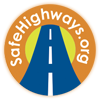Editor’s Note
Safety is the top priority for first responders and transportation professionals working on our nation’s busiest roadways – safety of the traveling public and safety of the responder. For Safety Service Patrol drivers, taking safety precautions is part of the daily routine and patrol drivers must remain alert and vigilant at all times when out on the road. There are, however, precautions that can be taken by state departments of transportation, toll road authorities and other agencies that operate Safety Service Patrols even before their SSP drivers step (or drive) out onto the highway. From vehicle wraps to uniforms to communications with incident management headquarters, there exists a wide variety of safety regulations, protocols and guidelines that transportation agencies and departments can enforce to enhance the safety of their Safety Service Patrol drivers.
Perhaps the most surprising discovery for our team when researching the safety of Safety Service Patrol drivers out on the road was the variety of opinions and guidance on the most effective color schemes for vehicle wrapping and lighting as well as the absence of a uniform standard for all Safety Service Patrol operators. While vast research has been conducted and most patrols across the country have employed some form of the many safety measures discussed in this issue’s feature article, the industry does not yet have a recognizable and uniform look for Safety Service Patrols that reaches across state lines. While we may not have discovered the “right” answer during our exploration of which safety enhancements are the most effective, there is universal agreement that Safety Service Patrols and the departments that operate them cannot take too many precautions when outfitting a patrol and providing SSP drivers with training and resources that promote the drivers’ safety.
Another step toward promoting the safety of Safety Service Patrol drivers, comes with public relations and communication outreach to remind the traveling public to “Move Over” when they see a first responder on the side of the road. Our friends at the Emergency Responder Safety Institute led the charge in providing transportation departments with a learning module focused specifically on this topic. We were happy to join them and contribute information on previous best practices specific to encouraging motorists to “move over” for Safety Service Patrols. We are proud to share the final product with our readers and encourage you to do the same with your colleagues: Traffic Incident Management Strategies for Public Outreach.
We would like to thank Anthony T. Furst from the Federal Highway Administration’s Office of Safety for shedding some light on safety countermeasures that can make a big difference in highway safety. Special thanks too to those transportation professionals who participated in our feature article and shed some light on the many precautions that can be taken to ensure safety on the roadway: Lynn R. Self, Courtesy Patrol Program Manager with the Tarrant County Sheriff’s Office (TCSO) in Texas; Jack Sullivan, CSP, CFPS, Director of Training, Emergency Responder Safety Institute (ERSI), and Managing Partner of Loss Control Innovations, Richmond, Va.; Eric Lees, President of Bach-Lees Design; Scott Yinger, Operations Manager-Field, Maryland State Highway Administration, Office of Coordinated Highways Action Response Team (CHART) & ITS Development; John McClellan, Minnesota DOT RTMC Freeway Operations Supervisor; Rebecca Gibson, P.E., NYSDOT – System Optimization Bureau; and John R. Easterling IV, P.E., PTOE FDOT Turnpike Enterprise. It is with the input of each one of these experienced transportation professionals that we are able to provide the industry with more information and resources to keep SSP drivers safe on the road.
As we close the year and enter the holiday season, we wish you all safe travels and remind you to “move over” for SSP drivers and other first responders when you see them on the side of the road. A very big “thank you” to all who contributed to this issue and our previous issues. We look forward to seeing you in the New Year and invite you to send us your feedback and suggestions on this issue and future issues.
Wishing you safe travels,
Rita Gallagher
Editor in Chief
